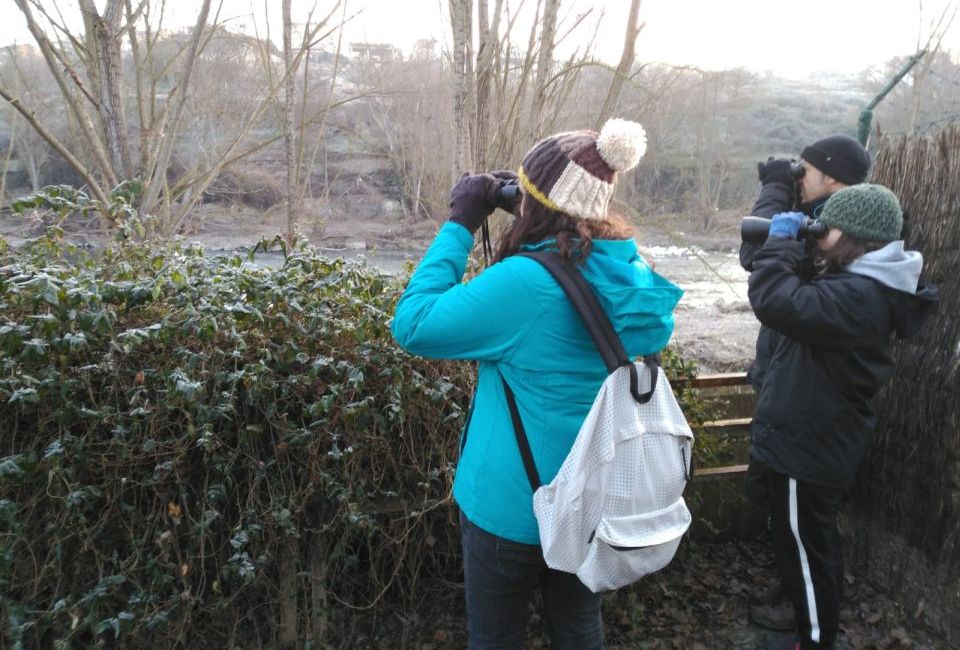
7,129 wintering aquatic birds are identified in the Ripollès, Osona and La Selva regions in the annual count of these birds in the high Ter river
The count of wintering aquatic birds in the high Ter river basin identified a total of 7,129 birds, according to the conclusions of this activity coordinated by the Mediterranean Rivers Studies Centre at the University of Vic - Central University of Catalonia (UVic-UCC), the environmental area of the Ter Museum. The results of the count, which took place on 12 January, have just been announced, and they show a significant decrease in the presence of great cormorants, which could be a coincidence, and a large contingent of European herring gulls and mallards, the two species with the largest populations in the area studied, which includes the regions of El Ripollès, Osona and part of La Selva, as far as the Pasteral reservoir.
This count is an initiative by volunteers, and the participants include the Osona Naturalists Group (ICHN - IEC), the Calldetenes-Osona Ringing Group and GEDENA-Ripollès, and 33 people participated as volunteer observers on this occasion. The count, which has been carried out every January since 1989, consists of a morning's walk by the groups along the banks of the river, in order to count all the birds that can be identified, as well as other animals, including their tracks. As well as the count on each walk, specific counts are made in the evening of the roosts of the grey herons and related species (ardeids), cormorants and gulls (laurids) present in the various areas. This information is complemented by weather data, including the temperature, the presence of ice or mist, the state of the sky and the water level, especially in reservoirs, among other figures.
On this occasion, the volunteers spread over 8 sections along the 100 kilometres of the river's length. They also visited the roosts of cormorants and ardeids, but they were unable to perform the count gulls in their roosts, because the birds roosted outside the Osona region on the dates the count took place.
A smaller population of great cormorants
The results include a total of only 250 great cormorants (Phalacrocorax carbo), a significantly lower figure than in previous years. The population of this bird in Osona, which reproduces in northern Europe and winters in the Mediterranean countries, usually fluctuates between 400 and 800 individuals, possibly as a result of the measures taken to control this species both in northern Europe (as a result of pressure from fishermen) and in Catalonia, where they have been excluded from the list of protected species. Climate fluctuations may also have an impact on the breeding and wintering areas. Those who performed the count point out that the decline in numbers could be a coincidence, as on previous occasions, which is why it is necessary to evaluate the data in the coming years to see the trends.
The species observed also included the European herring gull (Larus michaelis), which is still very plentiful, especially in the Osona region. By day, it can seen feeding in large groups in recently fertilised fields and in some landfills. They usually gather to roost in the rooftops of a large industrial warehouse in Roda de Ter. However, in 2019 the location of the roost had temporarily changed, making it impossible to count them.
There was also a significant number of mallards (1,529), especially in urban areas where they have more protection, and even sometimes overfed. Meanwhile, several species in the Ardeidae family, such as the little egret (Egretta garzetta, with 2 individuals, the grey heron (Ardea cinerea, with 76 individuals), the great white egret (Casmerodius albus, with 12 individuals) and the cattle egret (Bubulcus ibis), have consolidated their position as wintering birds in the high Ter. The cattle egret, which was observed in 2017 and 2018, was not seen on the day of the count, but had been reported in several flocks by numerous groups throughout much of the winter. 232 individuals were counted in Santa Eugènia de Berga on 12 January.
During the count, 12 common teals (Anas crecca) and 30 little grebes (Tachybaptus ruficollis), or double the number counted in 2018, were also seen. There are also large contingents of common snipes (Gallinago gallinago) and jacksnipes (Lymnocryptes minimus), amounting to 31 and 3 respectively on the day of the count, and 44 lapwings (Vanellus vanellus), which despite not wintering regularly in the high Ter can regularly be seen in large flocks that spend a few days there. Many chaffinches (Fringilla coelebs) were also counted, in flocks containing 1,250 individuals, although the figure of a thousand individuals had been exceeded in previous counts of wintering birds (2018, 2016, 2013 and 2006). Finally, a very large number of robins (Erithacus rubecula) were seen, with 3,111 reported during the count, as well as the Eurasian siskin (Carduelis spinus), with a total of 310 individuals.
The data collected is combined with those from all other counts that are carried out in Catalonia and throughout Europe at the same time. The count was coordinated in Catalonia by the Wildlife, Flora and Animal Protection Service of the General Directorate for the Environment and Biodiversity of the Government of Catalonia.